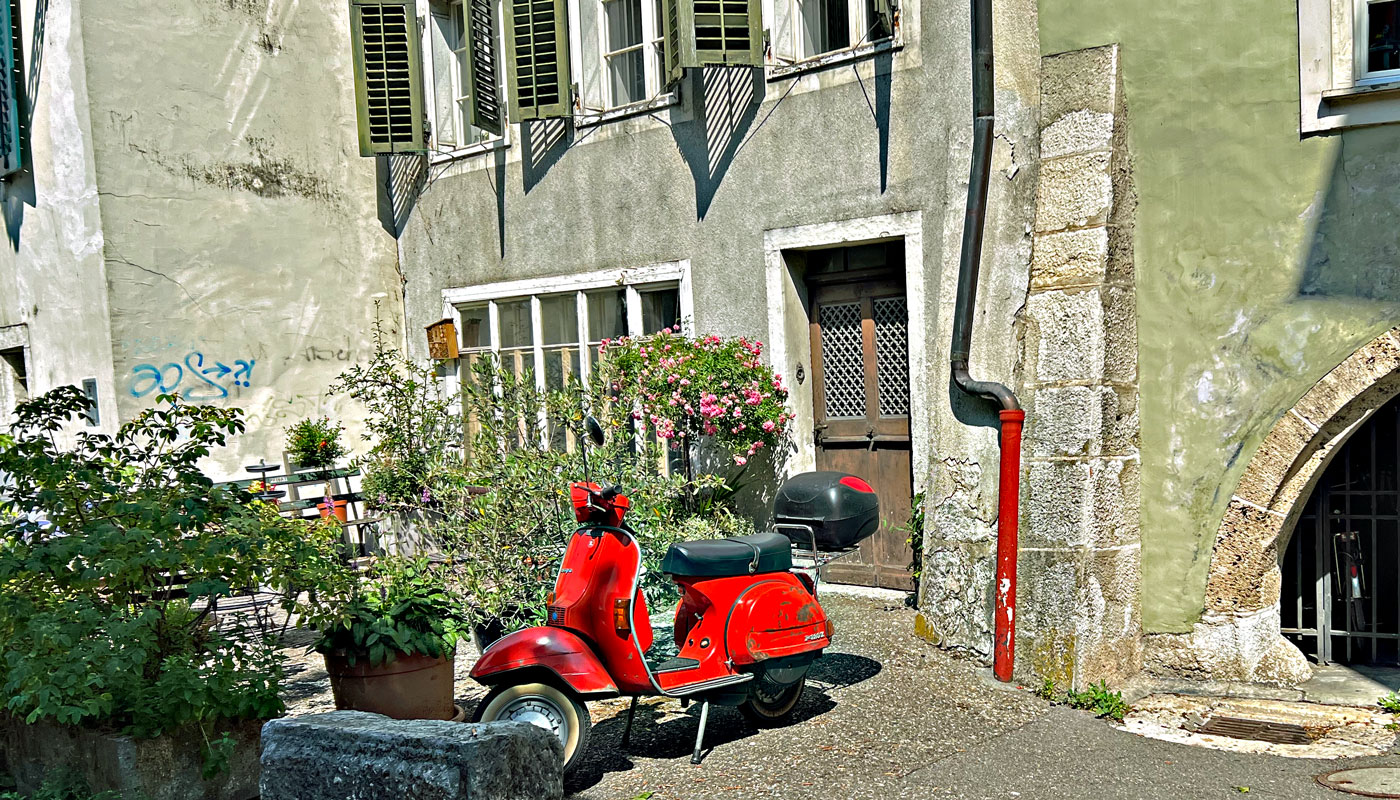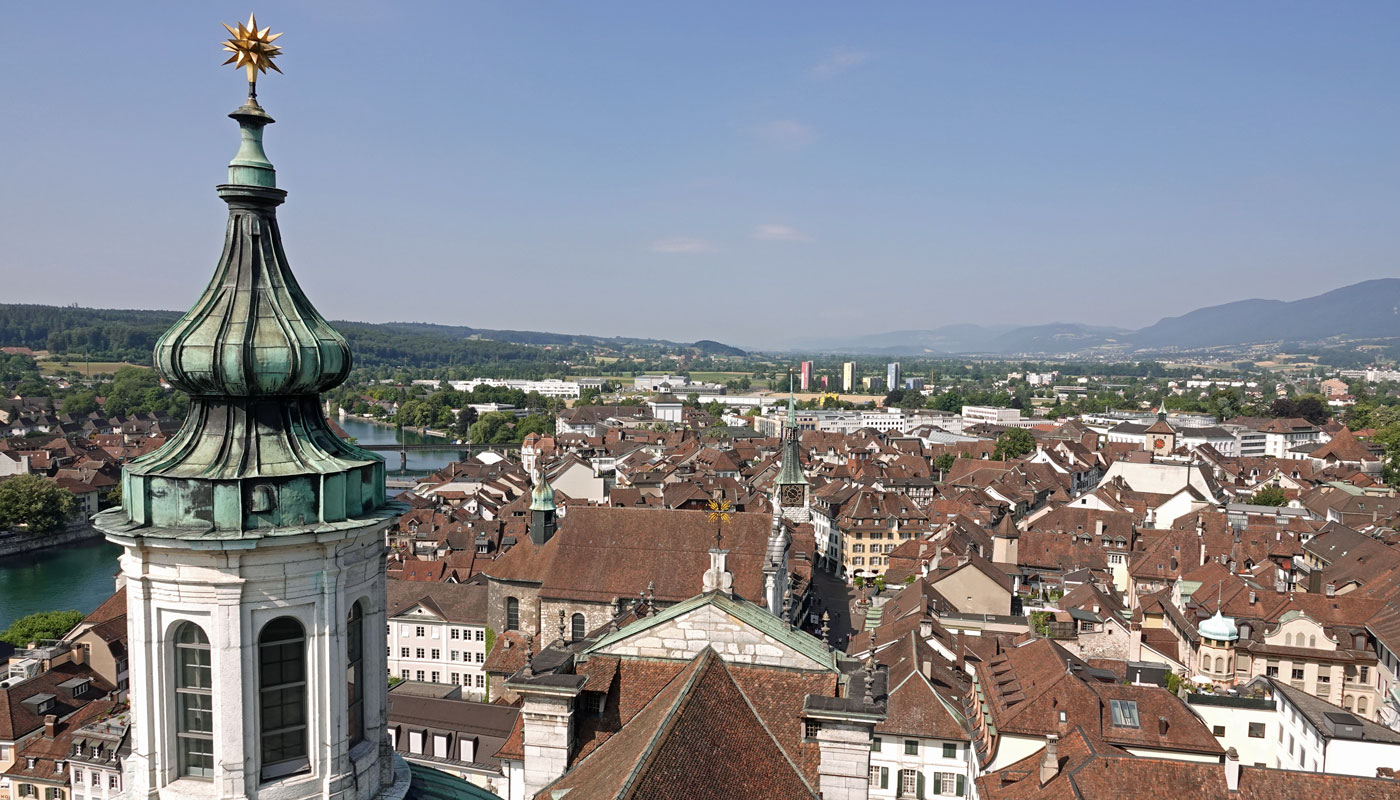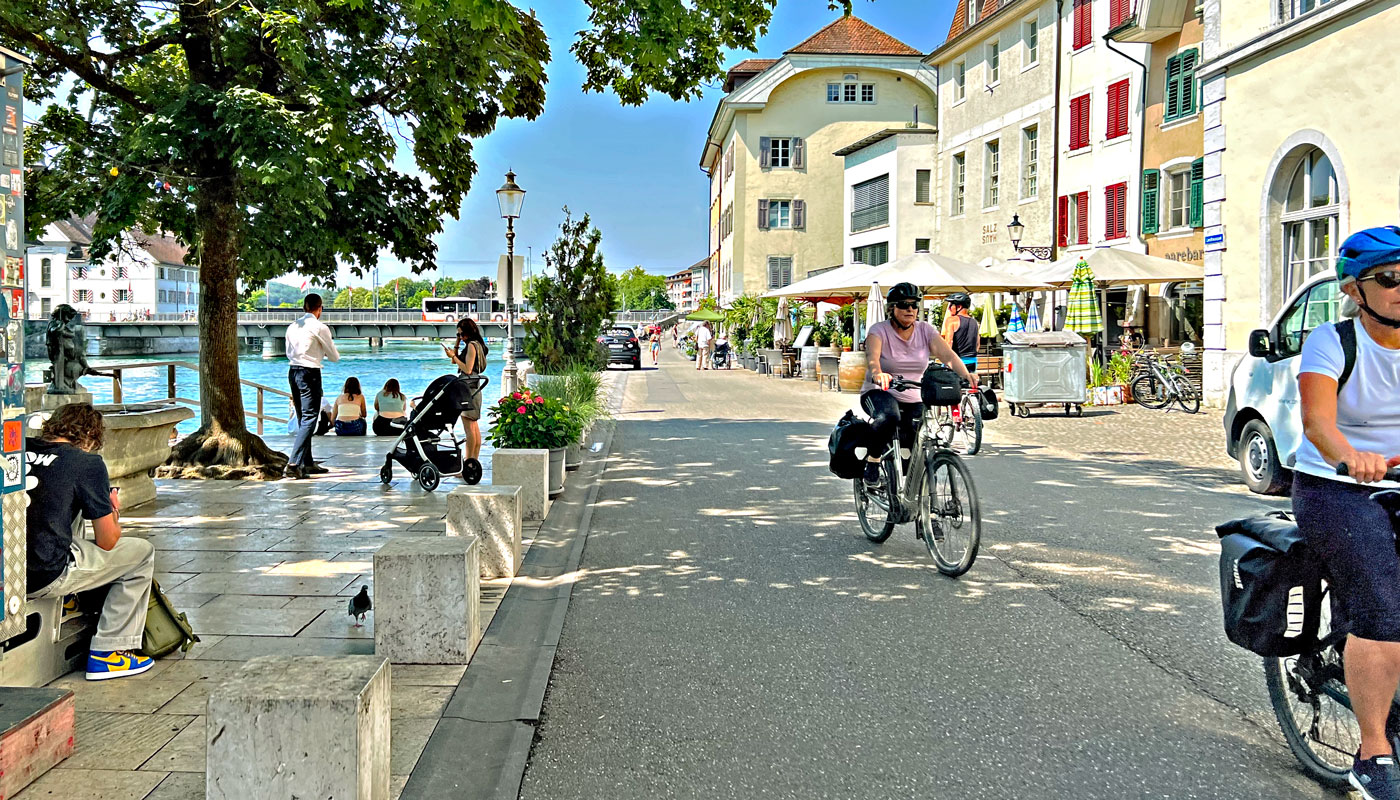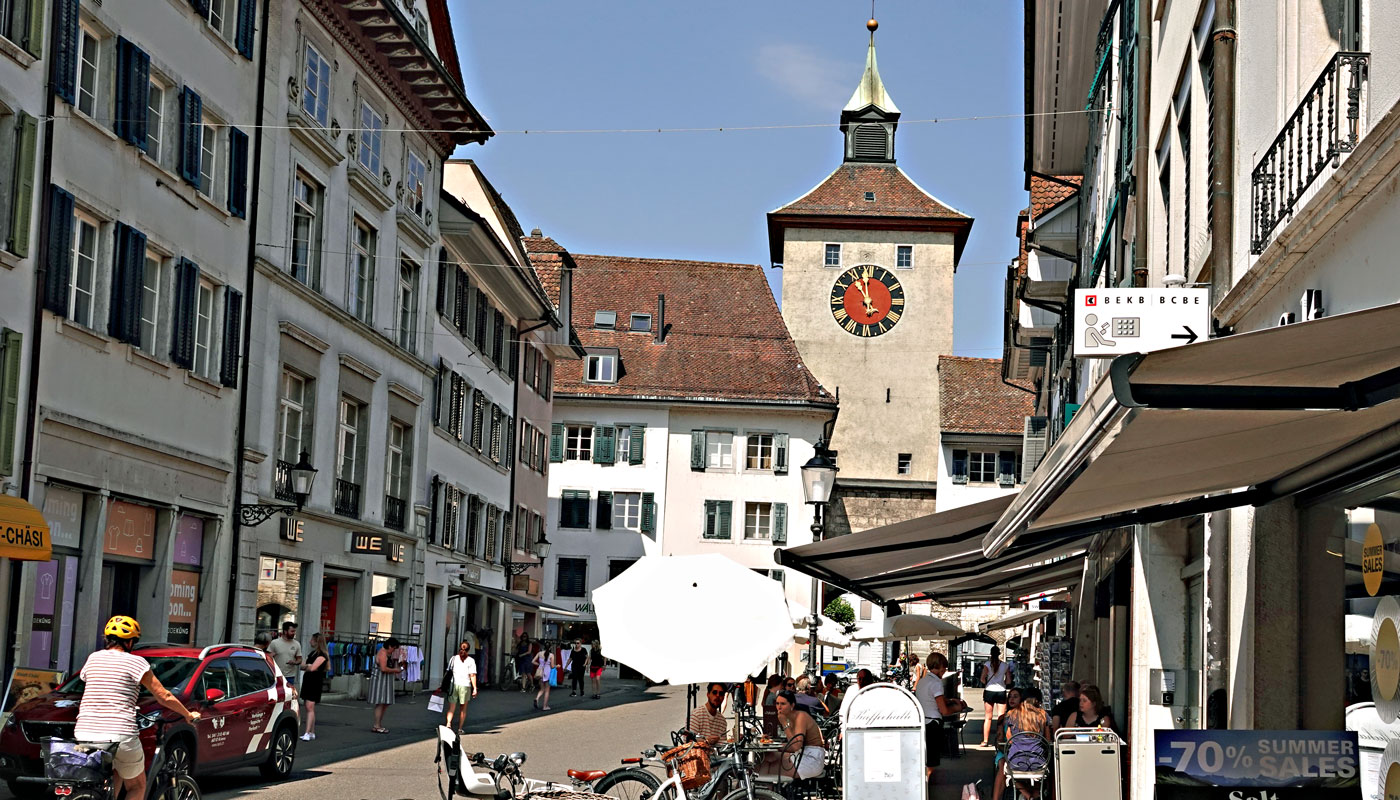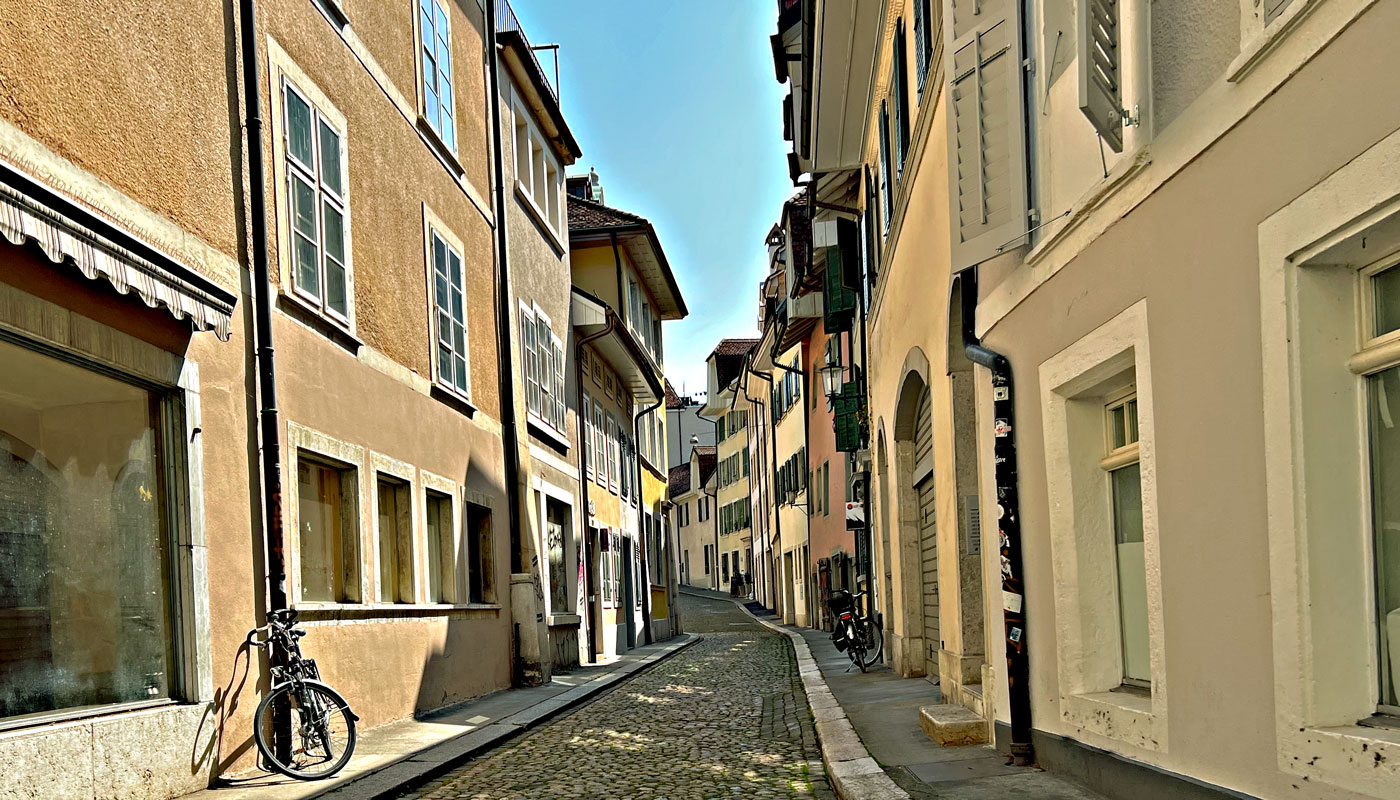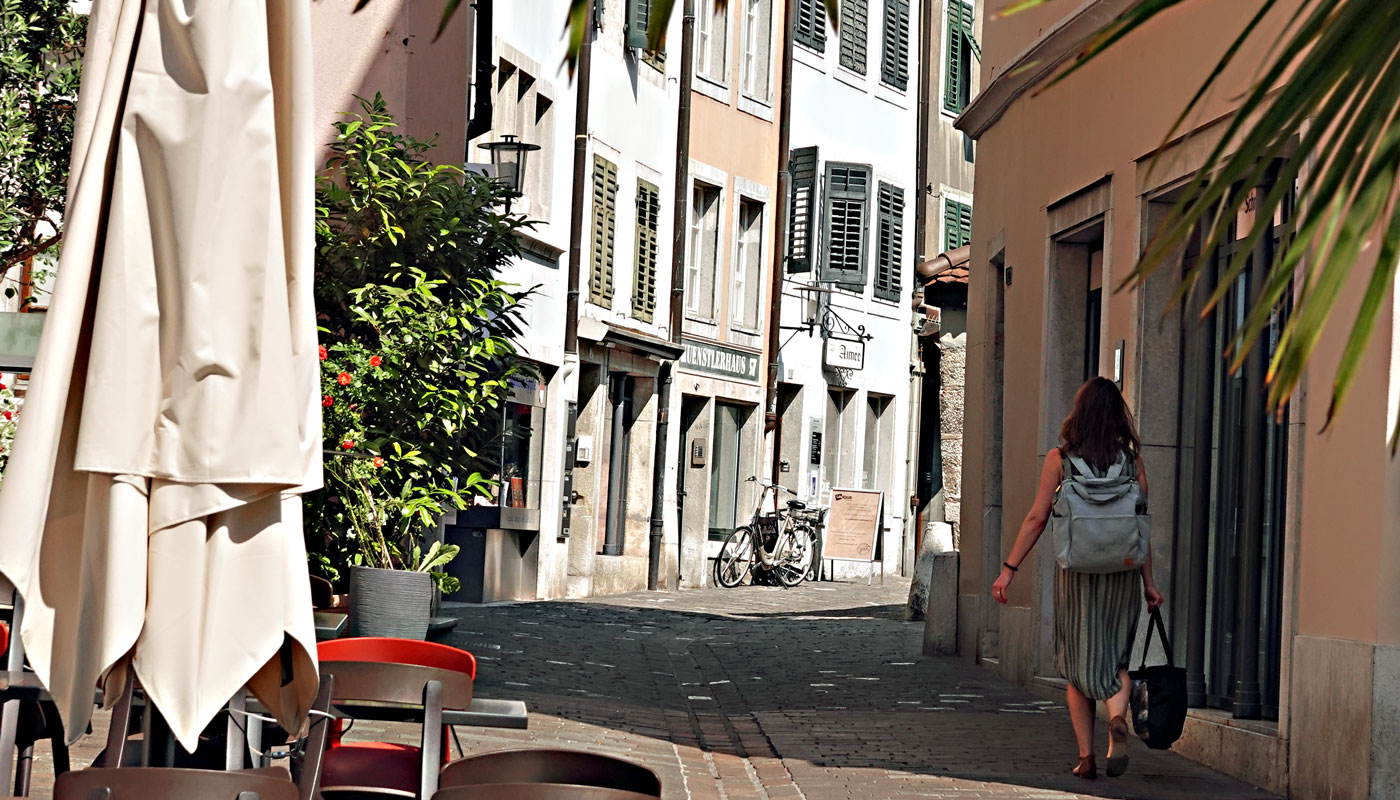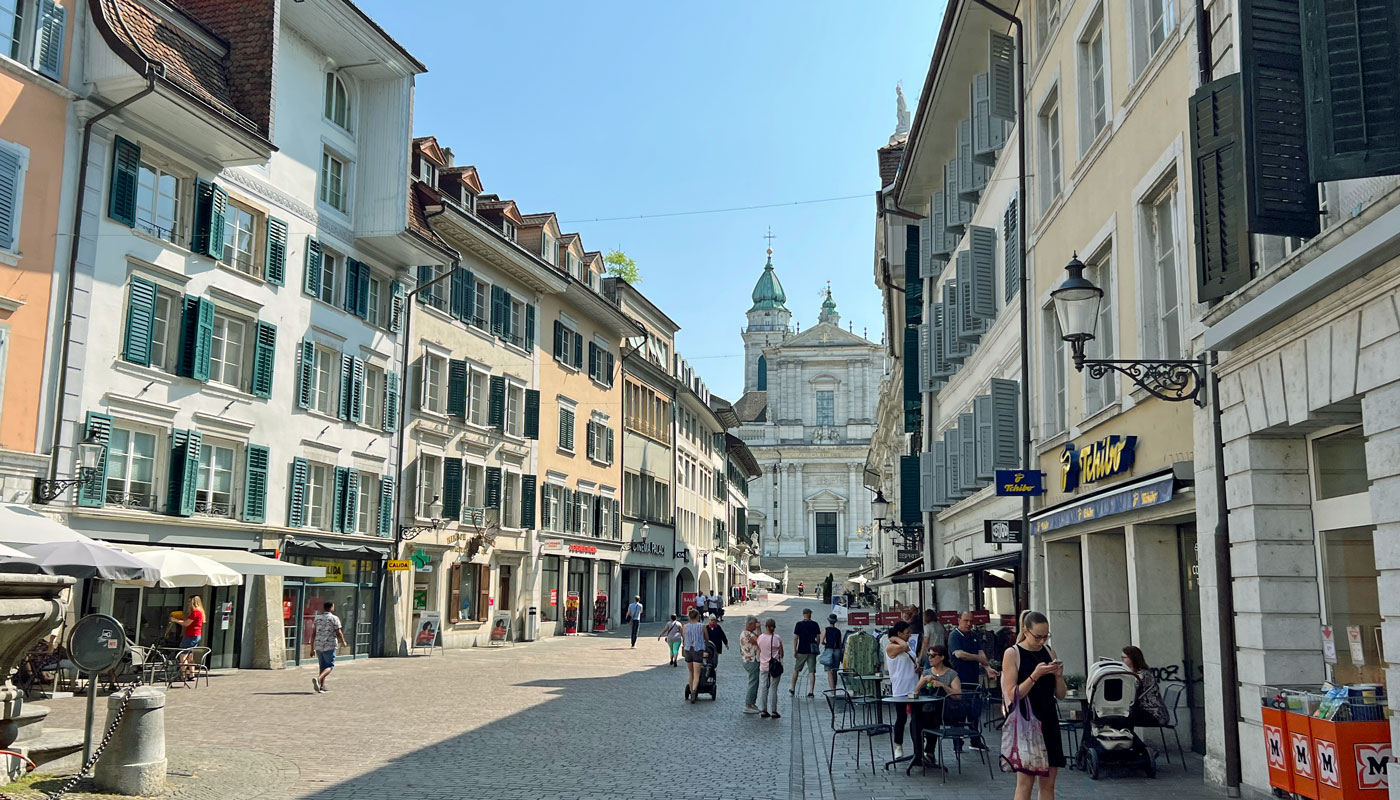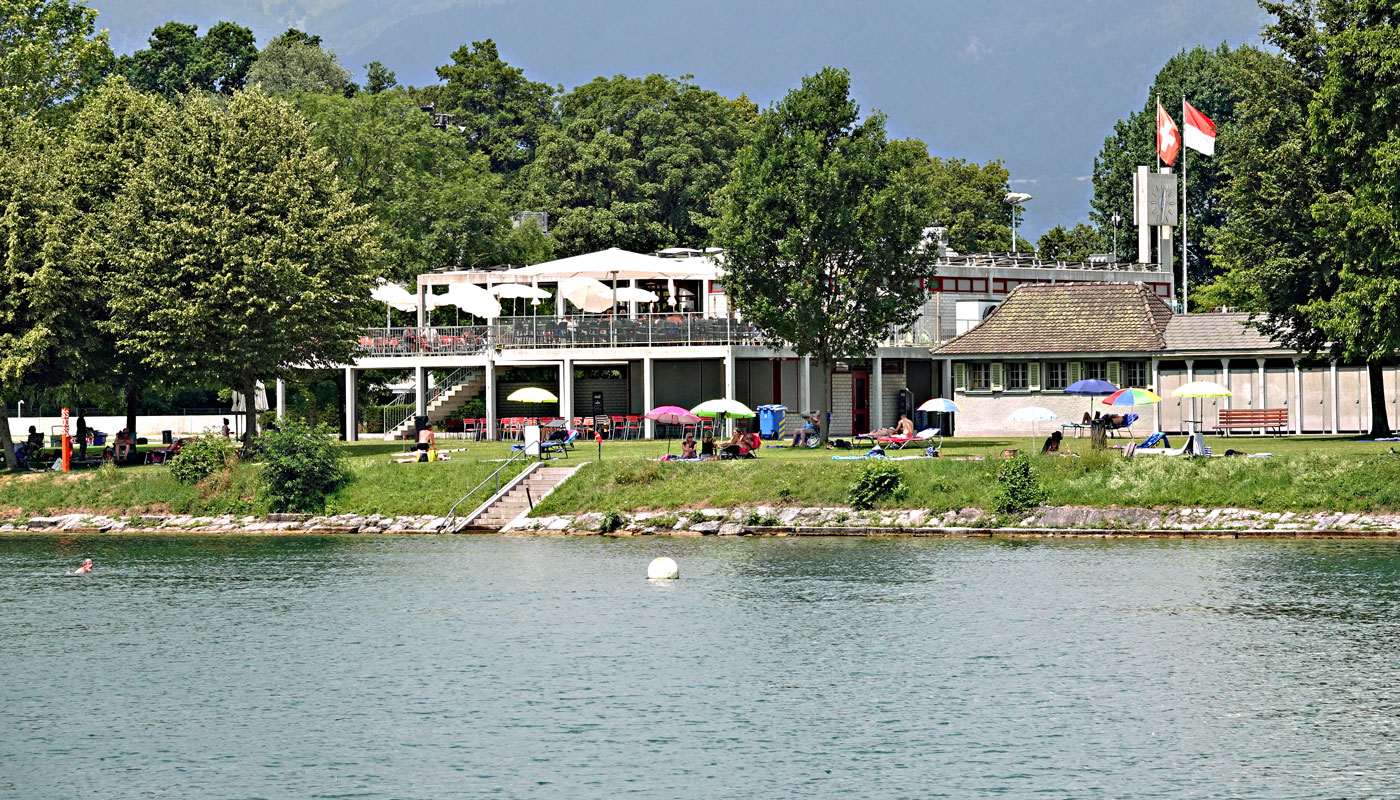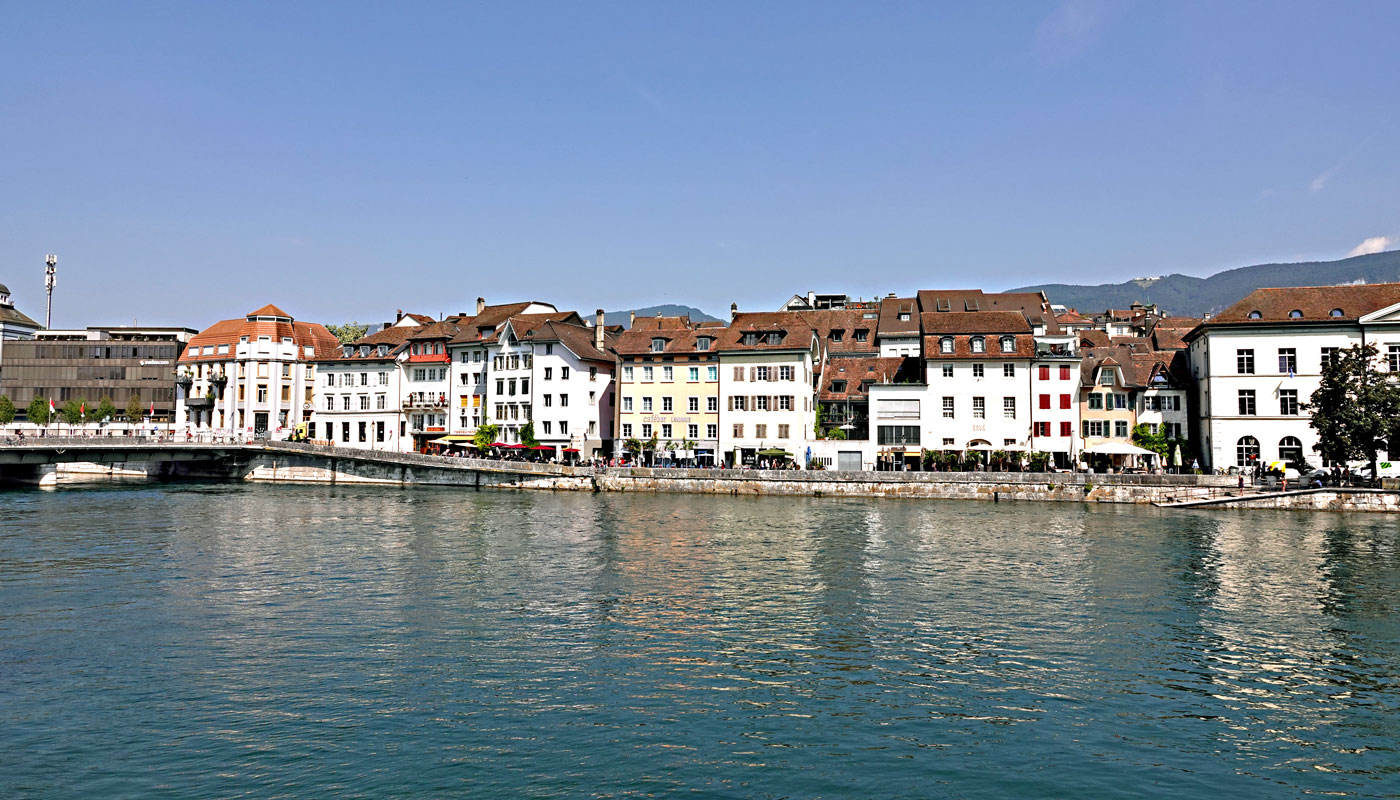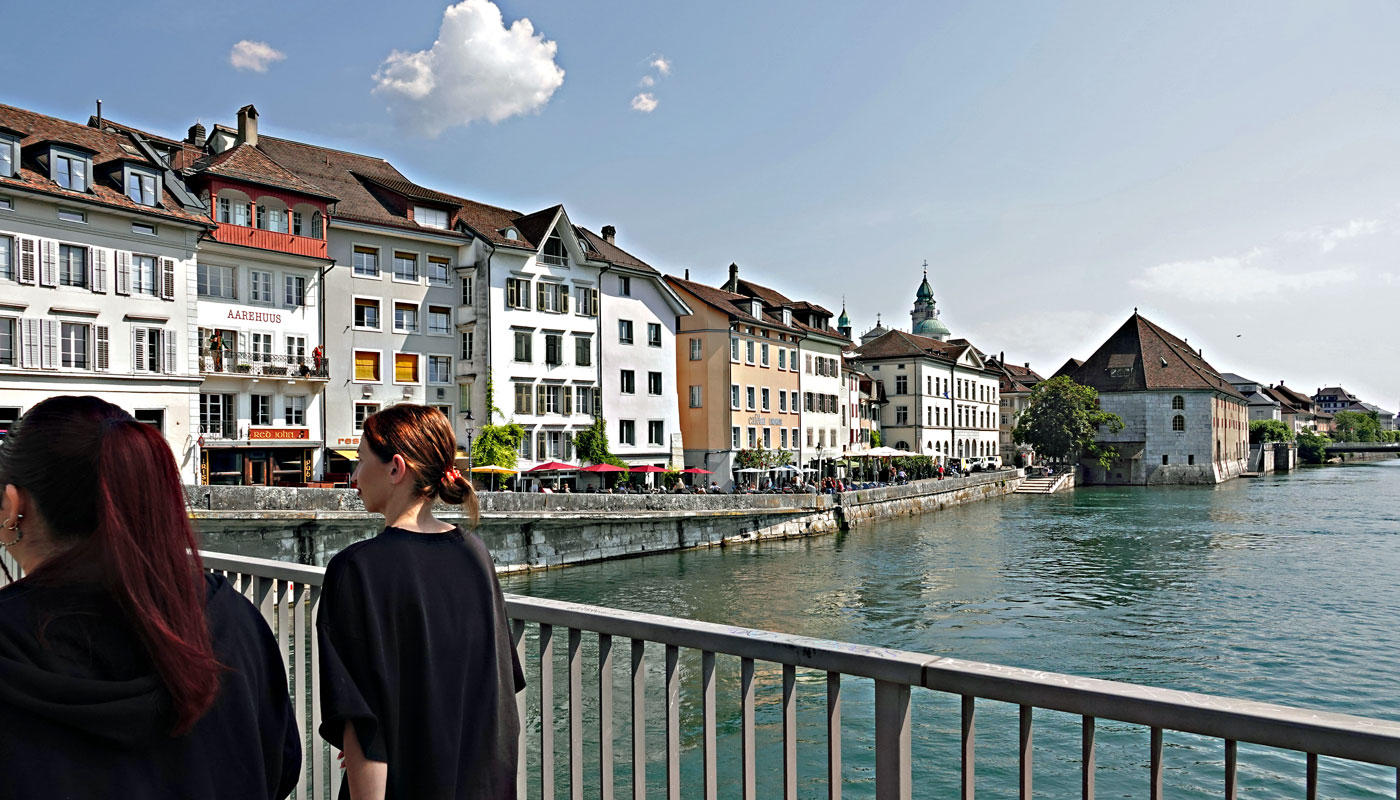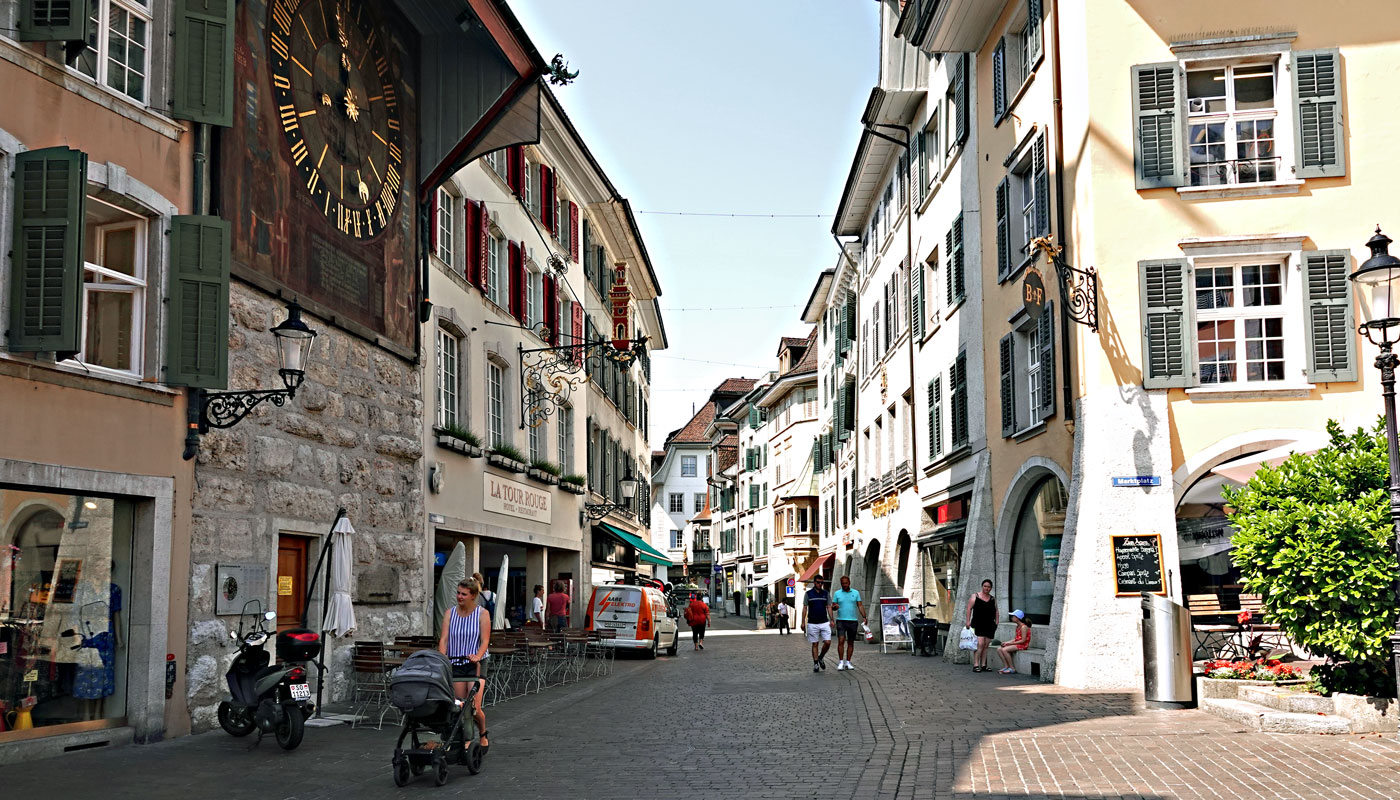Schools Solothurn: Information about education, further training Solothurn


1. where is Solothurn located?
Solothurn lies at the southern foot of the Jura at 430 m above sea level and the city level rises to 470 m above sea level. The River Aare flows through the middle of the town and divides it into a northern and southern part. Solothurn is also known as the City of Ambassadors or the City of St. Ursus. The earliest known coins of the town date from the 12th century and were minted under the East Carolingian ruler Louis IV. Most of the old town dates from the 15th to 17th centuries. The Emme flows into the Aare to the north-east at Emmenspitze. The old town lies on the terminal moraine of the Rhone Glacier, which also dammed up Lake Solothurn as it melted. Solothurn's local mountain, Weissenstein, lies just outside the town at 1284 m above sea level and can be reached by cable car. Bern is 41 km away, Basel 75 km and Zurich 93 km. Neighboring municipalities are Bellach to the west, Langendorf and Rüttenen to the north, Feldbrunnen - St. Niklaus to the east and Zuchwil and Biberist to the south. The schools in Solothurn have a large catchment area, as the surrounding areas have practically grown together.
2. how big is Solothurn?
In addition to being a municipality, Solothurn is also the capital of the canton of the same name. The town has a population of 17,000, while the entire region has 79,000 inhabitants. The town on the River Aare is spread over 6.28 km2. 66% of the city area is populated. The rest is used for agriculture and is partly wooded. Finds from the Mesolithic period show that the moraine ridge was a suitable resting place in the early Stone Age. A settlement was established in Roman times with the construction of an important road bridge. This was followed by the construction of a landing stage for inland shipping. The current interpretation of the Celtic settlement name with water gate or marketplace on the water confirms this. The liberal revolution of 1830 led to the demolition of the town walls and fortifications from the Middle Ages and early modern times. As a result of industrialization, the town received its first railroad connection in 1857. As a result, the population grew evenly. Solothurn is traditionally Catholic, but internal migration in recent centuries has led to the formation of a large Reformed community in Solothurn. Today, the city of Solothurn is divided into 14 districts. Ascom AG was the largest and best-known company to emerge in Solothurn. The more the economy developed in the town, the more important good education and schools in Solothurn with different orientations became.
3. how accessible are the schools in Solothurn by public transport?

reachable
In the city of Solothurn, public transportation can be reached via three train stations: Solothurn main station (supra-regional connections such as Lausanne, Geneva, St. Gallen, Zurich, Burgdorf, Thun and Bernese Jura), Westbahnhof and Allmend station. Regional connections to Bern, Niederbipp and Langenthal are easy. You can get from Solothurn to Nidau and Biel by boat. The bus company Solothurn und Umgebung (BSU) provides access to schools in Solothurn and the surrounding area. A post bus runs from Balmberg to Solothurn.
4 "Schools Solothurn": How do I travel by private transport?
The A5 connects Solothurn with Biel and Derendingen - where the highway section rejoins the A1. The three highway exits Solothurn-West, -South and -East lead to the city. The journey by car takes three quarters of an hour from Bern, an hour from Lucerne, just under an hour from Basel, 1 ¼ hours from Zurich and half an hour from Biel. The city has almost 1,300 short-term parking spaces and three multi-storey parking lots: Baseltor, Bieltor and Berntor. These are easy to find via a parking guidance system from Zuchwil. This makes it very easy to get to schools in Solothurn by car.

5 What kind of schools are there in Solothurn?
In addition to primary and secondary schools, Solothurn is home to special education schools, a speech therapy outpatient clinic, a music school, the Solothurn cantonal schools, day schools and private schools such as the Rudolf Steiner School. The extensive range of schools in Solothurn also includes the commercial vocational school, the commercial-industrial vocational school (GIBS), the FHNW University of Teacher Education, the cantonal health and social education center (BZ-GS), vocational schools, business schools, vocational schools, sports schools, language schools and the adult education center.
6. what catering options are available at "Schule Solothurn"?
There are many catering options in restaurants, cafés, canteens or to take away around the schools in Solothurn. Typical Solothurn specialties are Solothurn Funggi (mashed potatoes with apples and bread cubes), bread, cheese, wine soup, Biiremüsli (dried pears deep-fried in batter), Ofenguck (mashed potatoes in a casserole dish with beaten egg and diced bacon), Rindsvoressen (goes well with Funggi), Solothurner Gnusch (beef, potatoes and various vegetables) and Solothurner Torte (airy sponge cake with hazelnut meringue and cream filling.).

7 What is there to discover after class?

in Solothurn
Solothurn is considered the most beautiful baroque town in Switzerland. In the compact old town, you can visit the important St. Ursen Cathedral made of light marble with its 11 altars. In addition to beautiful baroque buildings, there are also Renaissance buildings. And the number eleven is very important for the city - that's why there are so many churches, chapels, fountains and towers in the Old Town on the River Aare. Annual events in Solothurn include Film Days, Literature Days, Beer Days, Classiscs and Fasnacht. Just outside the town is the wild and romantic Verena Gorge with its chapel and hermitage. You can discover these famous sights after visiting the school in Solothurn:
- Clock tower
- Town hall
- Medieval fortress walls
- Gates such as the Bieltor and Baseltor with the Riedholzschanze
- Towers such as the Buristurm, Riedholzturm and Krummturm
- St. Ursus Cathedral
- Churches such as the Jesuit Church, Franciscan Church and St. Mary's Church
- St. Peter's Chapel
- Wells such as forge gas wells and tannery gas wells
- Museums such as Altes Zeughaus, Kunstmuseum, Historisches Museum Blumenstein, Naturmuseum and Enter Technikwelt
- "11 i Uhr" (originally designed Solothurn clock around 3 meters high)
